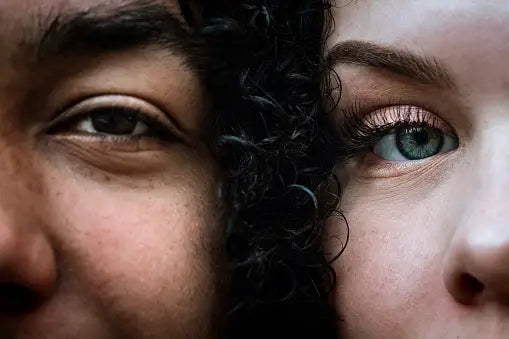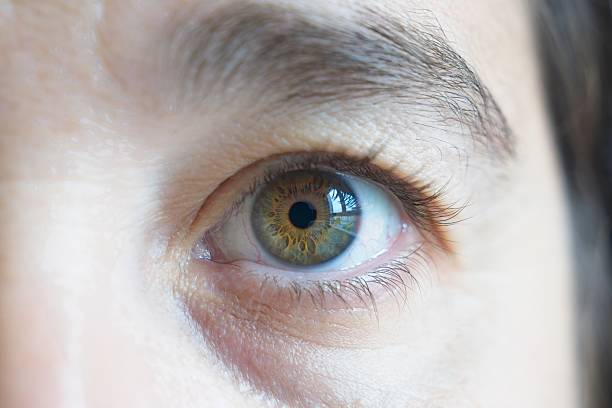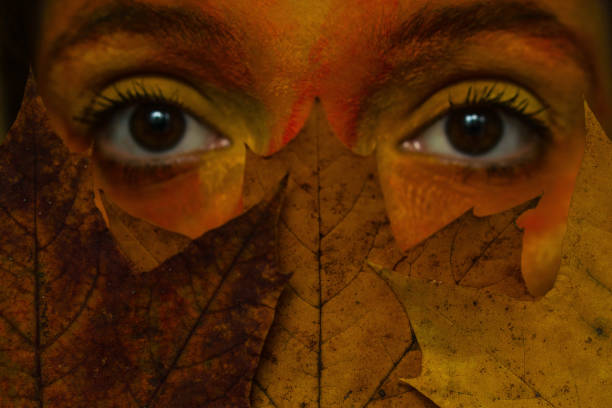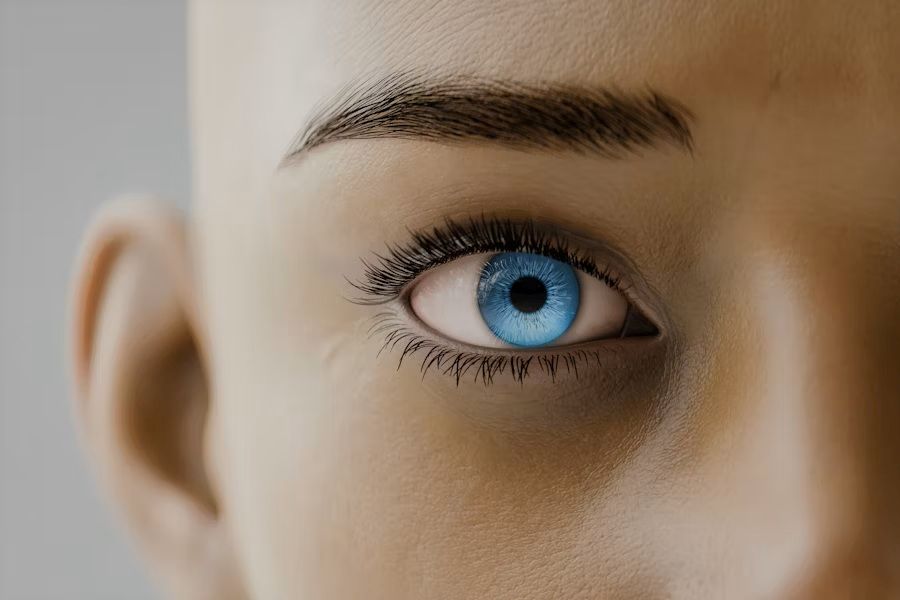Your Cart is Empty
The Controversial History of Eye Color in Racial Classification: A Lens into Human Prejudice

Throughout human history, physical characteristics have been used to categorize and, unfortunately, discriminate against different groups of people. Among these traits, eye color has played a surprisingly significant and often problematic role in racial classification. This article delves into the dark history of how eye color has been misused to support racist ideologies, its impact on society, and how modern understanding and technology are changing our perspective on this distinct human feature.
The Origins of Eye Color Classification
The fascination with eye color dates back to ancient civilizations. However, its use as a tool for racial categorization gained prominence during the Age of Enlightenment in the 18th century, coinciding with the rise of scientific racism.
Carl Linnaeus, often called the father of modern taxonomy, included eye color in his classification of human races in his 1735 work "Systema Naturae." He categorized humans into four groups:
1. Europaeus: Blue-eyed, gentle, inventive
2. Asiaticus: Brown-eyed, melancholic, greedy
3. Americanus: Black-eyed, choleric, combative
4. Afer: Black-eyed, phlegmatic, indolent
This classification system, while groundbreaking for its time in attempting to categorize human diversity, laid the foundation for centuries of pseudoscientific racism.
The 19th Century: Eye Color and the Rise of Scientific Racism
The 19th century saw an explosion of interest in racial theories, with eye color playing a central role in many of these misguided attempts at human categorization.
1. Phrenology and Physiognomy: These pseudosciences claimed to determine character and mental capacity based on physical features, including eye color.
2. Arthur de Gobineau's "Essay on the Inequality of Human Races" (1853-1855): This influential work proposed a hierarchy of races, with the "Aryan race," characterized by blue eyes, at the top.
3. Houston Stewart Chamberlain's "The Foundations of the Nineteenth Century" (1899): This book further popularized the idea of Nordic superiority, emphasizing blue eyes as a marker of "pure" racial stock.
Dr. Emma Richardson, a historian specializing in the history of science, notes, "The 19th century saw a dangerous conflation of emerging scientific methods with long-standing prejudices. Eye color became a convenient, visible marker for those seeking to justify racial hierarchies."
The Nazi Era: The Dark Pinnacle of Eye Color Obsession
The most infamous and tragic use of eye color in racial classification came during the Nazi regime in Germany. The Nazi ideology of Aryan supremacy placed a high value on blue eyes, along with blonde hair and fair skin, as markers of "racial purity."
1. The Nuremberg Laws (1935): These antisemitic laws used physical characteristics, including eye color, to define and persecute Jewish people.
2. Lebensborn Program: This Nazi program aimed to increase the "Aryan" population, often kidnapping children with "desirable" traits like blue eyes from occupied territories.
3. Josef Mengele's Experiments: The notorious Nazi doctor was obsessed with eye color, conducting cruel experiments on concentration camp prisoners, particularly twins, in an attempt to change eye color.
Dr. Sarah Thompson, a scholar of Holocaust studies, emphasizes, "The Nazi fixation on eye color as a racial marker shows how seemingly benign physical traits can be weaponized in the service of genocidal ideologies."
Post-War Era: Challenging Racial Classifications
In the aftermath of World War II, the scientific community began to actively challenge and dismantle racist theories based on physical traits like eye color.
1. UNESCO Statements on Race (1950-1967): These influential declarations rejected previous racial classifications and emphasized the unity of the human species.
2. Genetic Studies: Advances in genetics revealed the complex, polygenic nature of traits like eye color, debunking simplistic racial categories.
3. Anthropological Shift: The field of anthropology moved away from physical classifications towards cultural and social understandings of human diversity.
Modern Understanding of Eye Color Genetics
Today, our understanding of eye color is far more nuanced and scientifically grounded:
1. Complex Inheritance: We now know that eye color is determined by multiple genes, not a simple dominant-recessive pattern.
2. OCA2 and HERC2 Genes: These genes play significant roles in determining eye color, but many others are involved.
3. Continuous Spectrum: Eye color is recognized as a continuous trait, not discrete categories.
4. Global Diversity: Research has revealed the vast diversity of eye colors across all populations, challenging old stereotypes.
Dr. Michael Lee, a geneticist specializing in pigmentation, explains, "The genetics of eye color are far more complex than early racial theorists could have imagined. There's no genetic basis for using eye color as a marker of race or ancestry."
The Rise of Iris Photography: A New Perspective on Eye Color
Interestingly, as science continues to debunk old myths about eye color and race, a new trend is emerging that celebrates the unique beauty of each person's eyes. With the advancement of smartphone camera technology, many people are now capturing high-resolution images of their own irises, a practice often referred to as "eye selfies" or "iris portraits."
John Davies, a digital artist specializing in iris photography, shares, "These close-up iris shots reveal an incredible world of color and pattern that's unique to each individual. It's a powerful reminder of human diversity beyond simplistic categories."
For those interested in capturing their own iris photos:
1. Use natural light and a steady hand
2. Experiment with macro lens attachments for smartphones
3. Focus on bringing out the intricate details of the iris
This trend in eye photography serves as a poignant contrast to historical misuses of eye color, celebrating individual uniqueness rather than attempting to categorize or judge.
The Lingering Impact of Eye Color Stereotypes
Despite scientific advancements, the historical misuse of eye color in racial classification continues to have subtle impacts on modern society:
1. Media Representation: Certain eye colors are still overrepresented in media, perpetuating beauty standards rooted in racist ideologies.
2. Colorism: Within some communities, eye color can still play a role in colorist attitudes.
3. Implicit Bias: Studies have shown that people may still hold unconscious biases based on eye color, influenced by historical stereotypes.
4. Cultural Appropriation: Colored contact lenses to change eye color can sometimes veer into problematic territory of racial impersonation.
Moving Forward: Embracing Diversity and Challenging Old Narratives
As we continue to grapple with the legacy of racial classification, including the role of eye color, several key approaches are crucial:
1. Education: Teaching the history of scientific racism, including the misuse of traits like eye color, is essential to prevent the repetition of past mistakes.
2. Representation: Promoting diverse representation in media and challenging beauty standards based on eye color or other racialized features.
3. Scientific Literacy: Encouraging public understanding of the genetic complexity of traits like eye color to combat simplistic racial categorizations.
4. Cultural Sensitivity: Being aware of the historical context of eye color in discussions of race and appearance.
5. Celebration of Diversity: Embracing the wide spectrum of human eye colors as a testament to our species' rich genetic diversity.
Conclusion: Seeing Eye Color in a New Light
The history of eye color in racial classification serves as a stark reminder of how science can be misused to justify prejudice and discrimination. From Linnaeus's early categorizations to the horrors of Nazi racial ideology, eye color has been a tool for those seeking to divide humanity into hierarchical races.
However, this history also highlights the progress we've made in understanding human diversity. Modern genetics has thoroughly debunked the notion of discrete races based on traits like eye color, revealing instead the beautiful complexity of human variation.
As we move forward, it's crucial to remain vigilant against new forms of pseudoscientific racism while celebrating the true diversity of human appearance. The trend of iris photography offers a powerful metaphor for this shift – from using eye color to categorize and divide, to appreciating each person's eyes as unique works of art.
In the end, the story of eye color in racial classification is not just about genetics or anthropology. It's a human story of struggle against prejudice, the pursuit of scientific truth, and the ongoing journey towards a more just and equitable understanding of human diversity. By confronting this history, we can work towards a future where eye color is appreciated for its beauty and uniqueness, rather than misused as a marker of racial difference.
Leave a comment
Comments will be approved before showing up.




